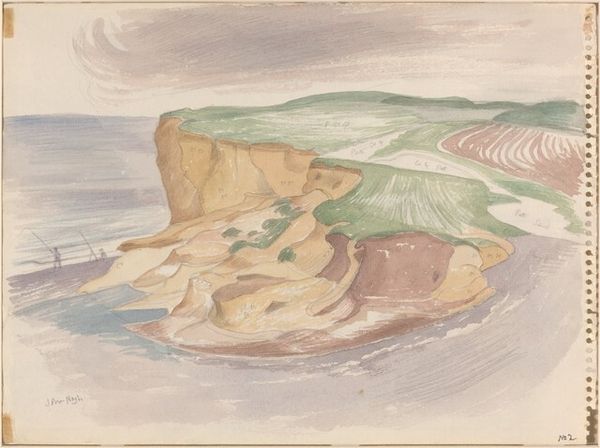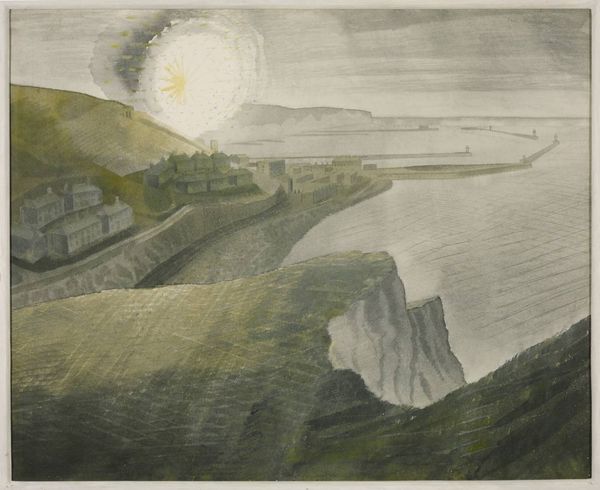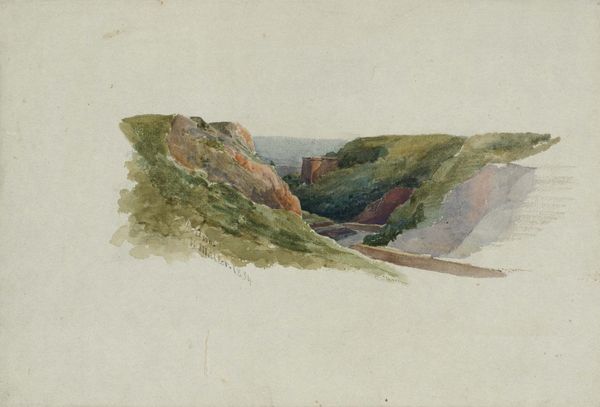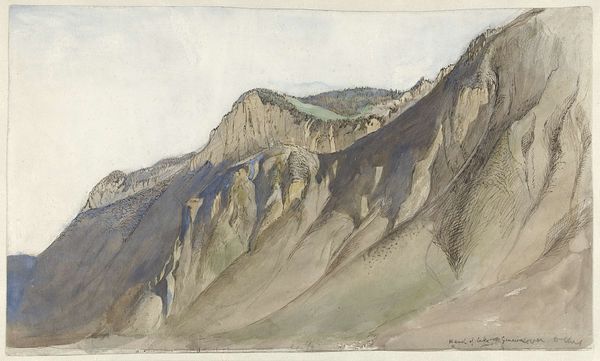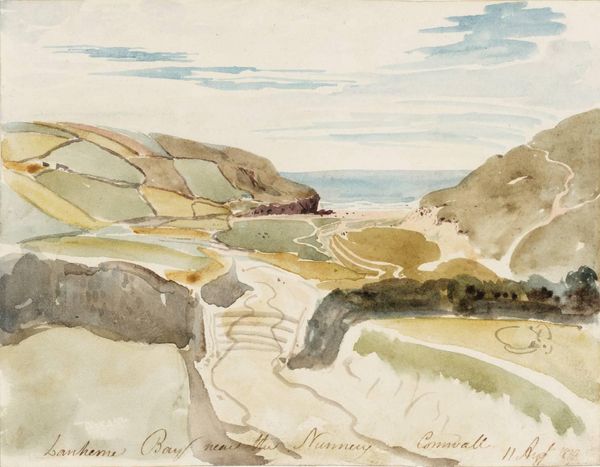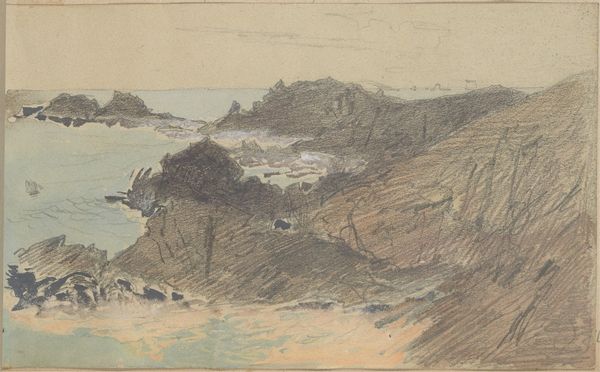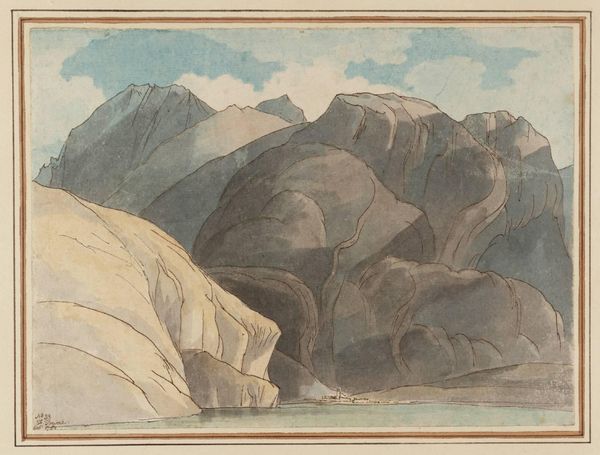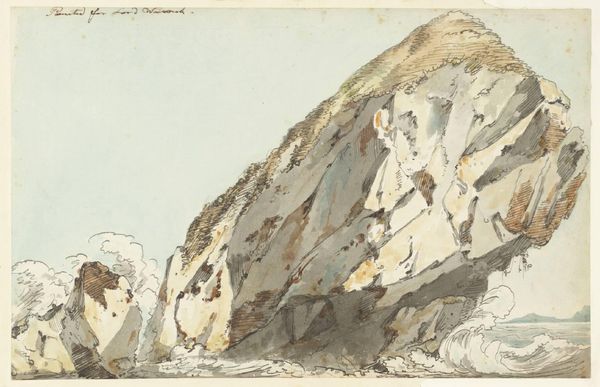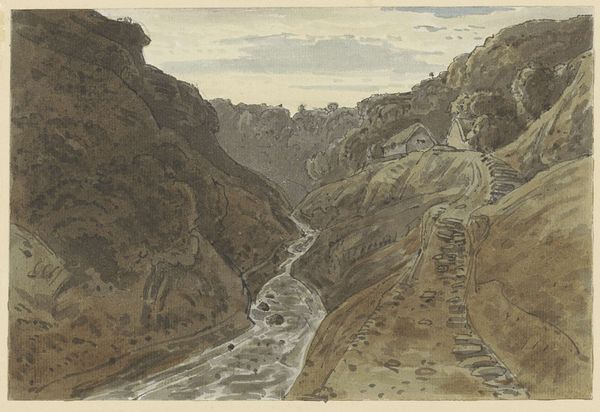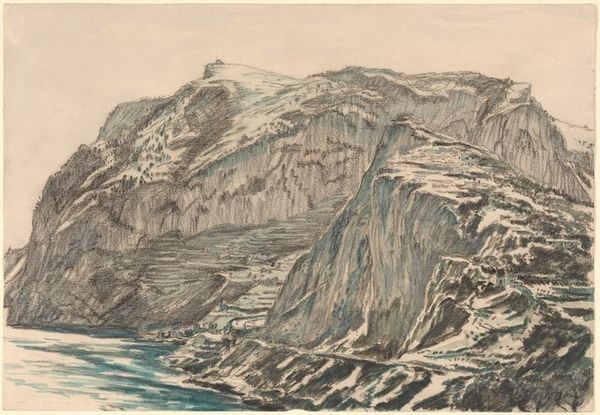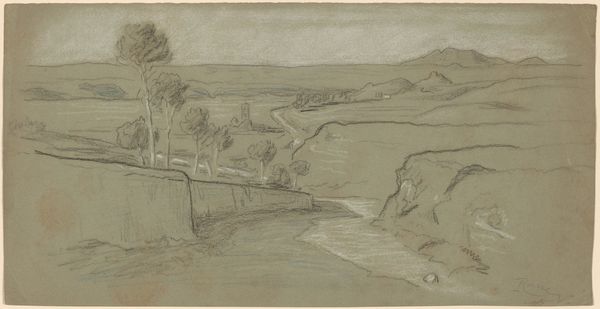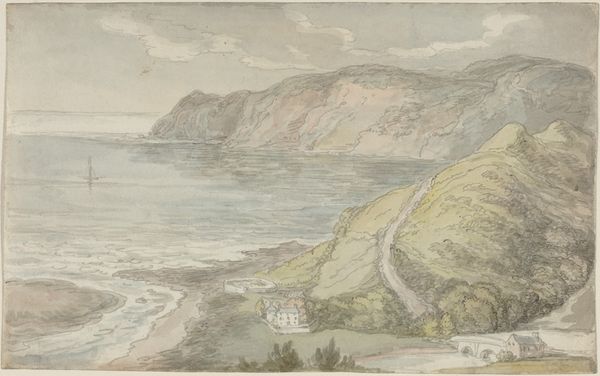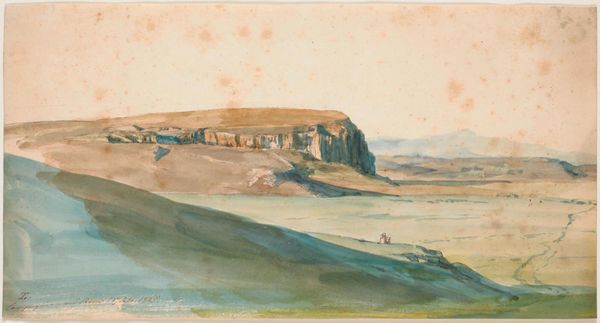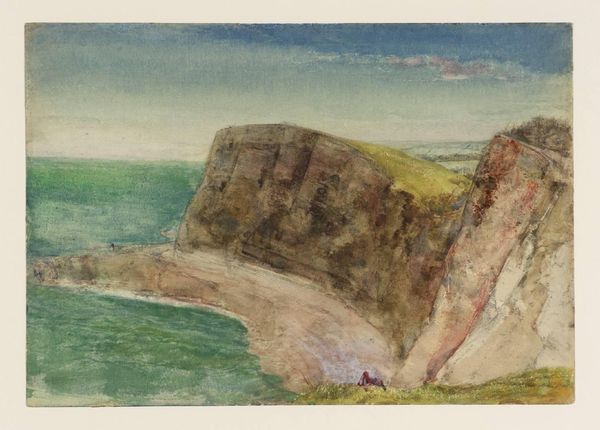![Cliff End, Weybourne [verso] by John Northcote Nash](/_next/image?url=https%3A%2F%2Fd2w8kbdekdi1gv.cloudfront.net%2FeyJidWNrZXQiOiAiYXJ0ZXJhLWltYWdlcy1idWNrZXQiLCAia2V5IjogImFydHdvcmtzLzYzZTE1NjRmLTdiMjUtNDFhMy1hN2I2LTQyZjFkN2ZhN2FlMi82M2UxNTY0Zi03YjI1LTQxYTMtYTdiNi00MmYxZDdmYTdhZTJfZnVsbC5qcGciLCAiZWRpdHMiOiB7InJlc2l6ZSI6IHsid2lkdGgiOiAxOTIwLCAiaGVpZ2h0IjogMTkyMCwgImZpdCI6ICJpbnNpZGUifX19&w=1920&q=75)
drawing, plein-air, watercolor
#
drawing
#
plein-air
#
landscape
#
watercolor
#
realism
Dimensions: overall: 22.6 x 30.4 cm (8 7/8 x 11 15/16 in.)
Copyright: National Gallery of Art: CC0 1.0
Editor: This is John Northcote Nash's watercolor and drawing, "Cliff End, Weybourne," from around 1970, done *en plein air.* It strikes me how the cliffs in the foreground are rendered so meticulously, contrasted with the looser handling of the sea and sky. What do you see in this piece? Curator: I'm drawn to the underdrawing and the artist's process. Notice the grid – it suggests a very deliberate transfer method, a way to break down the landscape into manageable components for replication. What does that say about the role of industry even in something as seemingly straightforward as landscape painting? Editor: Industry? I thought landscape painting was more about capturing nature. Curator: Well, consider the labor involved. Nash isn't just passively observing; he's actively constructing an image. The materials – the watercolor paper, the pigments – were produced through various industrial processes. The grid imposes an almost cartographic approach to a vista – less an exercise in aesthetic experience, more a work process involving manufacture and commodification. Look closely at the paper; it is punched on one side as if it was taken from a drawing pad; does this mean that the support also influenced the picture-making? Editor: I hadn't thought about it that way. It does seem less spontaneous, more like a carefully planned operation, as if a printing process, too, had impacted the picture's method of production. Curator: Exactly! We can see the hand of the artist, but also the influence of the culture in which the painting was produced, of available and practical methods, where materials influence the production of the view itself. Editor: I see your point. I came in thinking about art as a representation of nature, but now I'm also considering how it's shaped by manufacturing and available technologies. Curator: Precisely. Examining art through a materialist lens allows us to uncover these often-overlooked aspects.
Comments
No comments
Be the first to comment and join the conversation on the ultimate creative platform.
